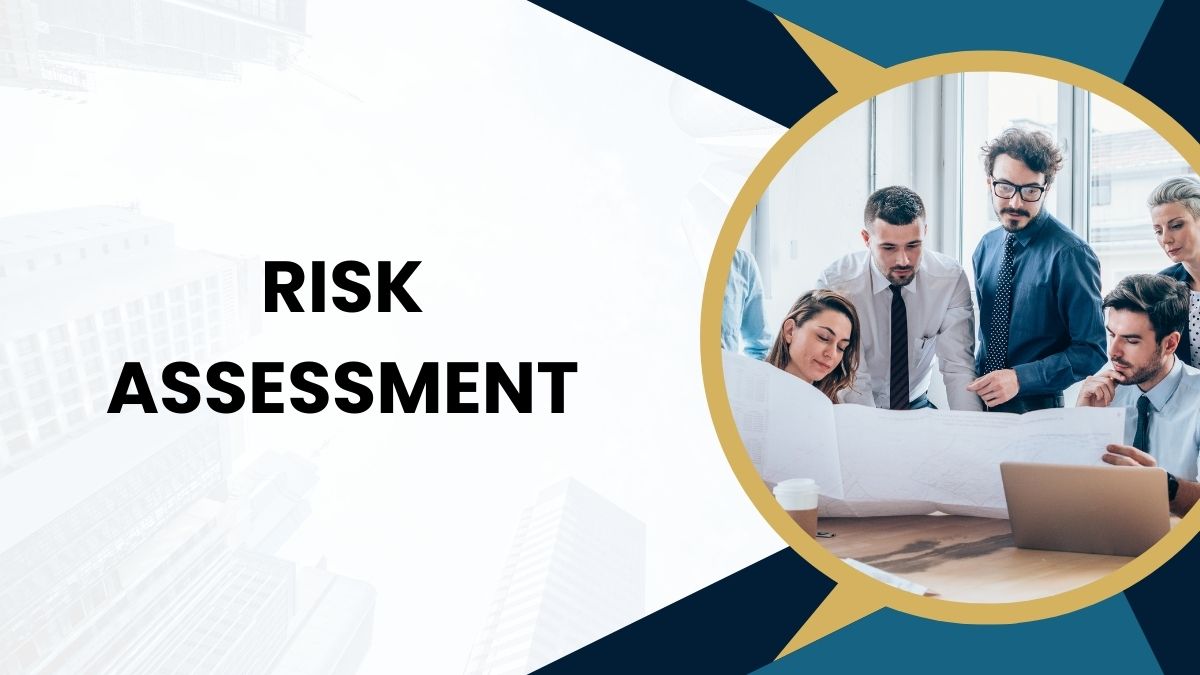Table of Contents
Auditing, by nature, demands precision, insight, and a firm grasp on potential risks.
But how can organisations ensure their audits deliver the right results?
The answer lies in a robust risk assessment. When performed effectively, risk assessment in auditing becomes the cornerstone of an audit plan development that mitigates future surprises.
By identifying the most significant risk areas, auditors can easily focus their resources where they matter most, paving the way for informed decisions and improved business integrity. In this guide, we explore developing an effective audit plan, applying best practices in risk assessment, and ensuring organisations stay ahead of potential issues.
What is Risk Assessment in Auditing?
Risk assessment identifies potential risks, evaluates their likelihood and impact, and determines acceptable tolerance levels. The outcomes of this assessment are either quantitatively or qualitatively. It plays a crucial role within a wider risk management strategy, helping minimise the potential consequences of identified risks.
Audit risk comprises inherent risk, control risk, and detection risk.
If not adequately addressed, these risks could lead to an inaccurate or misleading audit outcome. Therefore, risk assessment enables auditors to prioritise and strategically allocate their efforts, ensuring that the audit is efficient and effective.
Importance of Risk Assessment in Audit Plan Development
Risk assessment plays an integral role in developing a robust audit plan. The primary objective of an audit plan is to design procedures that will accurately evaluate an organisation’s financial statements or processes.
Organisations may waste resources on low-risk areas without a thorough risk assessment in auditing while leaving significant threats unchecked. This imbalance can lead to incomplete audits and open the door to potential financial discrepancies, regulatory penalties, or reputational damage.
Key Steps for Developing an Effective Audit Plan
Developing an effective audit plan is a multi-step process that hinges on risk management principles in auditing.
Below is a breakdown of the most important steps to develop an effective audit plan:
| Steps | Description |
| Risk Identification | Identifying potential risks related to the organisation’s operations, financial reports, or regulatory compliance |
| Risk Prioritisation | Ranking risks based on likelihood and impact, focusing on areas with the highest inherent risk |
| Risk Mitigation | Developing tailored audit procedures aimed at mitigating identified risks |
| Monitoring | Regularly reviewing and updating the audit plan to incorporate new risks or changes in the business environment |
| Reporting | Creating a comprehensive audit report that reflects the findings, significant risks, and recommendations for improvement |
Auditing Best Practices for Risk Management
Following auditing best practices that streamline the process is essential to maximising the effectiveness of the audit plan.
- Data-driven decisions: Use data analytics to detect unusual trends or patterns indicating risks.
- Regular reviews: Periodic review and risk assessment updates help ensure the audit plan stays relevant.
- Engagement of stakeholders: Key stakeholders collaborate to ensure that the audit aligns with strategic business objectives.
Strategies for Overcoming Challenges in Internal Audit Risk Assessment
Internal auditors often face various audit challenges in the risk assessment and audit planning process.
Below are some practical solutions to help auditors navigate common issues in risk assessment, audit risk analysis, and audit planning:
-
Improving Data Quality:
One of the biggest challenges in risk assessment is ensuring data accuracy. Auditors can address this by advocating for regular data quality checks. Establishing strict data validation and verification protocols ensures that the information used for risk analysis and audit planning is reliable and current.
-
Implementing Standardised Risk Criteria:
Subjectivity in risk perception is a common problem during audit planning. Auditors should use a standardised framework with clear, predefined risk categories and severity levels to overcome this.
-
Continuous Training and Education:
Investing in continuous professional development helps auditors stay informed about emerging risks, industry changes, and new technologies that could impact the audit process.
-
Enhancing Communication Protocols:
Effective communication is critical to a successful risk assessment. Establishing clear communication channels within the audit team and with stakeholders helps prevent misunderstandings during the audit planning phase.
The Final Words: Your Path to CPA Certification at Imarticus Learning
By integrating comprehensive risk assessment in auditing into the audit process, businesses can stay ahead of potential problems and ensure their operations remain robust and compliant.
The Association of Certified Professional Accountants (AICPA) is the gold standard in accounting, with over 400,000 members worldwide. AICPA is shaping the profession’s future and enhancing trust in global financial markets.
Now, through Imarticus Learning, you can join this prestigious league by becoming a CPA, which opens doors to endless career possibilities. Earn the coveted CPA title and gain exclusive access to the AICPA community, connecting you with top professionals and thought finance leaders.
Join the CPA Course at Imarticus Learning and become part of an elite global network of finance professionals!

